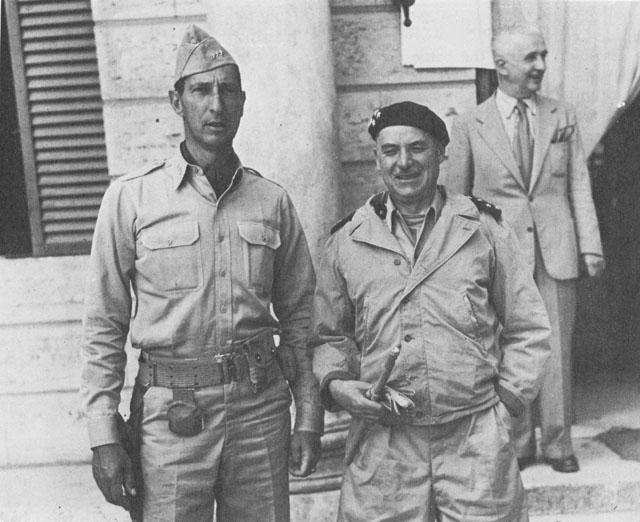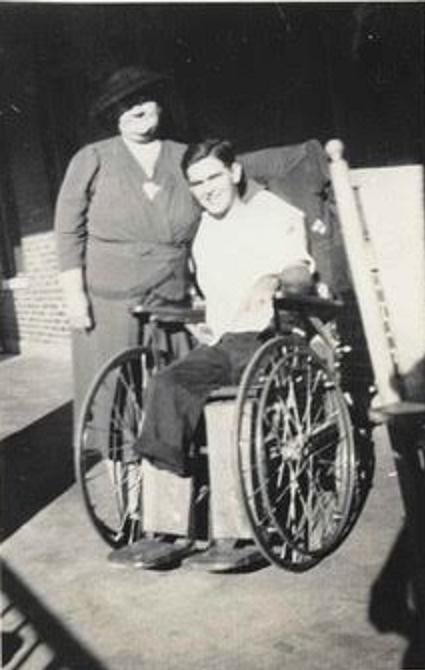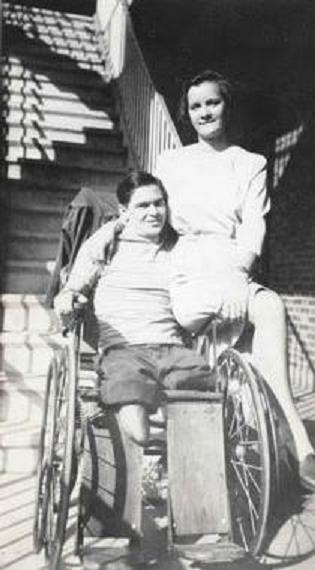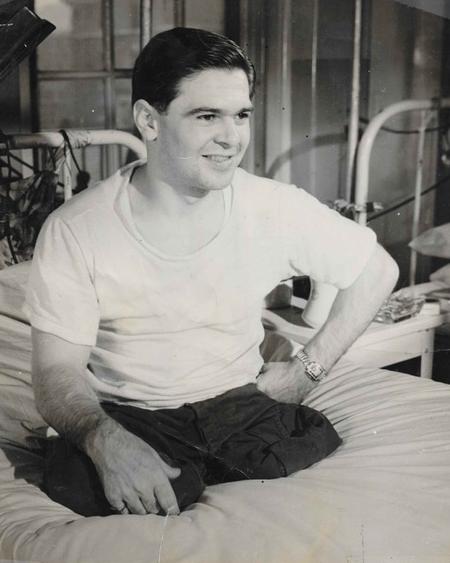Mr. Aubrey Holland was just a regular guy living in West Conshohocken in 1943.
Family and friends knew of him as “Sam”.
He worked as a machinist at the John Wood Manufacturing Company of Conshohocken.
World War II was raging throughout Europe and Asia.
Like many in the United States, Mr. Holland honored the call of the nation and served in the United States Army during World War II.
Mr. Holland was one of 22 men of West Conshohocken who joined the United States military on the same day – March 5, 1943, according to a news article dated March 9, 1943, in The Conshohocken Recorder.
He returned home, though, as a different man.
In the United States Army, Private Holland served as a medical corpsman.
According to the Norristown Chapter 25 of Disabled American Veterans, in a report dated April 6, 1972, Private Holland was assigned “to an assault unit during the crossing of the Rapido River…on January 20, 1944.”
This was Cassino, Italy. The community is located to the southeast of Rome.
This area was the scene of four battles.
The top photograph shows the ruins of Cassino following those battles in 1944.
Casualties from the battles included many from the Allied nations fighting the Germans that had occupied this section of Italy.
Many members of the militaries of the United States, the United Kingdom, New Zealand, Poland, Canada, Australia, France, and other nations lost their lives or were injured in the battles to free Cassino and the immediate area from German occupation.
One of the men who was injured and survived was Private Holland.

Italy had surrendered to the Allies, but Nazi Germany did not accept such betrayal.
Nazi Germany occupied Italy. Italian troops not loyal to Germany were disarmed and worse.
The Allies now had to fight the Germans to take Italy.
Nazi Germany would not make it easy, simple, or quick for the Allies.
Lines of defense were established by the Germans across Italy to stop the Allies from advancing from the south of that nation.
One of the lines – the Gustav Line – ran through Cassino.
To get to Rome – one of the key goals of the Allies – the troops would have to break the Gustav Line.
It would not be easy, simple, or quick.
Monte Cassino provided unexcelled views throughout the valleys and countryside in the region.
The Germans mined the area. Barbed wire impediments were employed.

Cassino was situated on the Gustav Line.
The Battles of Cassino – as noted, there were four in total – lasted from January 17, 1944, through May 18, 1944.
Brits, Indians, Canadians, Americans, French, New Zealanders, Australians, Moroccans, Algerians, Tunisians, South Africans, and others fought at Cassino.
Among those at the front with the Allies were female ambulance drivers with the Second Moroccan Division of the French Army. According to several reports, including in the book “Monte Cassino: Ten Armies In Hell” by Mr. Peter Caddick-Adams, the American commander, Lieutenant General Mark Clark of the United States 5th Army, was against having women at the battlefield.
The response from General Alphonse Pierre Juin, a leader of the French troops:
“The women of France, like the men, are proud to die for their country”
The women of the Second Moroccan Division of the French Army stayed at the front.

Cassino was eventually taken and the Gustav Line was broken.
The Allies could then move on to liberate Rome.

The cost at Cassino was high. To both the Allied and German military forces.
According to the book “Real History Of World War II: A New Look at the Past”, written by Mr. Alan Axelrod, German casualties included about 20,000 injuries and deaths at Cassino.
The cost to the Allies was much higher.
According to the book, Allied casualties included about 54,000 injuries and deaths.
Today, you can travel to Cassino, Italy, and visit national cemeteries holding the remains of the sons of Poland, the United Kingdom and other Commonwealth nations, and the United States, among others.

“They died there valiantly and heroically, giving their lives that peoples of Europe might be liberated from tyranny…They rest tranquil and secure in the friendly soil of Italy. May our great debt to them, and all others who died in the cause of freedom, serve as an inspiration to all peoples to dedicate themselves to freedom and lasting peace.”
President Dwight D. Eisenhower
A quote from his speech at the Dedication of the Sicily-Rome American Cemetery

“For our freedom and yours
We soldiers of Poland
Gave our soul to God
Our bodies to the soil of Italy
and our hearts to Poland”
The English translation of the Polish inscription of the memorial at this cemetery, according to the Montecassino Abbey.
“Let us remember, finally, that the place on which we stand has been made fertile by the blood of so many heroes: in front of their death for the great cause of freedom and peace, we have come to bow, once more, our heads.”
Pope John Paul II
A quote from his Homily on May 10, 1979 At the Polish Cemetery at Monte Cassino

One of the casualties of Cassino was Private Holland.
During the night of January 21, 1944, the life of Private Holland was altered forever.
He was grievously wounded early in the first battle at Cassino.
Multiple news reports detail the situation that Private Holland found himself in that night.
As he gave aid to a wounded soldier on the battlefield, a bullet hit Private Holland in his arm.
Though injured himself, Private Holland took the wounded soldier to a safer place. He then took three other wounded soldiers to an aid station.
As the four walked to that aid station, a shell fragment hit Private Holland in his left leg.
His leg was now broken.
Private Holland was down.
But not out.
He used cloth to make tourniquets on his arm and leg.
His feet were frost-bitten.
Either one hand or both hands (there are reports of both) was/were also frost-bitten.
He lay in the battlefield for 4 days as war ranged on between the armies.
As he lay there, he developed pneumonia.
He stayed alive with water from his canteen.
In a news article dated August 16, 1944, in The Washington Post, the newspaper quoted Private Holland:
“Nobody knew I was there, the brush was so thick, and as fast as our engineers could build bridges across the river, the Jerries [Germans] would blow them out. Their shells fell in the field near me during the four days. Finally…both sides arranged a three-hour truce to remove the wounded, and I was found by a searching party. The weather was bitterly cold and I couldn’t do much to keep warm except heap dirt around me.”
That “searching party” that Private Holland alluded to in 1944 was identified in news articles in 1946.
Private Holland, as he lay severely wounded in that Italian field, received initial help from the most unlikely of sources:
Two German Nazi soldiers.
In a news article dated February 8, 1946, in The Conshohocken Recorder, the following biography was printed:
“[Private] Aubrey Holland lay for four days, helpless on a frozen battlefield on the banks of the Rapido River, before help came to him. His left arm and left leg were broken by shell fragments, both feet and one hand were frost-bitten and he was suffering with pneumonia.”
“First to discover his plight were a couple of Nazi soldiers, according to the story [Private] Holland told his family. During a three-hour truce between the enemy fighters to permit care of the wounded, the Nazis happened upon [Private] Holland, who aside from his captain, was the lone survivor of his entire unit. The Nazis, he reports, gave him a cigarette and a bit of water and told him that his own men would probably pick him up soon. Shortly after that, aid came from his own Army, who had apparently given him up as dead with the rest of his unit.”
The offer of a cigarette and water showed that humanity still existed in Hell.
A second newspaper confirmed the account that German Nazis came to the aid of Private Holland.
A news article dated February 6, 1946, in The Philadelphia Inquirer, reported that a Nazi patrol had “signaled to American medical corpsmen” that there were two American survivors – including Private Holland – that needed help.
It may seem unusual that enemies – Americans and the Allies on one side and the Germans with some Italian support on the other side – could cooperate, but there evidently were several truces during the Cassino battles where the Allies and the Axis armies stood down while the injured and dead from both sides were moved from the battlefield.
According to the book “Monte Cassino: The Hardest Fought Battle of World War II”, written by Mr. Matthew Parker, there were times where both sides worked together.
Mr. Parker provided a reason why it may have been Germans who found Private Holland.
It may have been part of a strategic effort to minimize future casualties on the German side.
“Three days later [this would have January 24, 1944] the Americans requested a truce so that they could collect their dead and any wounded who might still be alive,” Mr. Parker wrote in his book. “The Germans agreed, and carried the bodies down to the riverbank so that the Americans would not be able to mark their positions.”
To provide a perspective of the horrors of this battle, Mr. Parker quoted an unnamed veteran: “A stack of eighty bodies was piled up along the bank [of the Rapido River] to be recovered later; these had received direct hits from mortar shells while standing in their fighting holes and had no heads, shoulders or arms.”
The piles of bodies described by that unnamed veteran were confirmed by another military veteran from western Pennsylvania.
On the same date that Private Holland was struck down, Private Albert DeFazio of Penn Hills was at the same battle.
In “One Soldier’s Story of a Forgotten War”, a book written by his daughter, Ms. Valerie DeFazio Vacula, Mr. DeFazio (now Mr. Albert DeFazio, Sr.) detailed what he witnessed as a member of the United States Army during the battle.
“What I saw next would and still does haunt me. Oh my God, I saw piles of bodies, three and four piled up,” he says in this book. “Within a second, another [shell] would hit and I’d see the same thing — another pile of mangled bodies, missing hands and arms, even legs. Body parts everywhere. I said, ‘I don’t want to see anymore,’ so I hit the ground and covered my head. The noise was horrific…All I could hear were the screams of dying men.”
It was this landscape where Private Holland laid waiting for assistance for four days.
Initially, his family was not told of his actual injuries.
A sister-in-law to Private Holland, The Conshohocken Recorder reported in a news article dated March 7, 1944, had received a letter at her home in Connaughtown from the wounded Private Holland; in the letter, he indicated that he “had suffered a broken leg”.
His actual injuries, though, were far more severe.
Once he was taken to a military hospital in Italy, doctors found that he had gangrene. His right leg was amputated immediately.
“He was put in a cast prior to the trip from Europe to the United States,” stated Mr. Scott Holland, one of four sons of Private Holland. “He told those around him that he had extreme itching on his leg. He was told not to worry.”
He returned to the United States on June 14, 1944 – Flag Day – according to a news article dated February 8, 1946, in The Conshohocken Recorder.
The specific hospital he went to initially in the United States is uncertain.
According to a news article dated August 16, 1944, in The Washington Post, Private Holland was first sent to a hospital in West Virginia; he was later moved to the Walter Reed General Hospital in Washington, DC.
Other news reports only note that he was sent to the Walter Reed General Hospital.
“When they finally cut a swatch of the cast on his left leg, they found maggots,” explained Mr. Scott Holland. “Flies had evidently laid eggs on his leg before the cast was sealed. The itching that my father felt was likely those maggots eating the dead flesh of my father’s leg. In all likelihood, those maggots saved my father a second time.”
“The maggots had stopped the gangrene from proceeding to healthy tissue,” Mr. Scott Holland continued. “Had they not been present, my father would likely have died prior to ever getting back to the United States.”
The left leg of Private Holland was amputated in July of 1944.
He returned to West Conshohocken in 1945.
With no legs.

For his service to our country, Private Holland was awarded the Silver Star for an act of bravery during the campaign along the Rapido River in Cassino.
For the wounds he suffered, he also received the Purple Heart with Oak Leaf Cluster.
According to The Conshohocken Recorder in a news article dated February 8, 1946, the citation that accompanied the Silver Star Medal read in part:
“Private Holland, a medical aid man attached to an assault unit, during the crossing of the Rapido River advanced with his unit over open heavily mined terrain, through an intense concentration of enemy artillery, mortar and machine-gun fire. Fearlessly exposing himself to the withering fire, he moved from casualty to casualty, skillfully administrating aid and helping them to position from which they could be evacuated. With magnificent daring, Private Holland crawled through a forward barbed wire entanglement to aid one of his comrades who was lying wounded exposed to concentrated fire of the enemy. Although he was wounded himself, in reaching this casualty, he continued forward and moved the man to a place of safety. He was wounded again by shell fragments…His gallant action reflects great credit upon himself and the Armed Forces of the United States.”

The word “hero” is used by many today to describe a variety of people who do outstanding work.
Sometimes, the word “hero” is bandied about as a clever description of someone who did something special, something different.
Sometimes, the word “hero” does not do justice in describing a person.

Private Aubrey (Sam) Holland of West Conshohocken, with his actions in Italy, certainly meets the definition of a hero.

Part III will focus on the love story between two sweethearts from West Conshohocken who decided that the wounds of war would not separate them. How one man and one woman helped give hope to each other as well as to a nation. Part III will be published tomorrow.
Part IV will explain the ups and downs – the human frailties – and the love between this family and their neighbors throughout the Freedom Valley. Part IV will be published on Saturday.
Part V will give a perspective from Jewish individuals on how human compassion and kindness could occur in the midst of a hellish situation. Part V will be published on Sunday.
These news columns may give you hope and give you reason to offer thanks on this Thanksgiving Day Holiday Weekend.
The photograph of the German paratroopers at Monte Cassino is provided courtesy of Bundesarchiv, Bild 101I-577-1917-08 / Haas / CC-BY-SA 3.0, 1944.
The photograph of Monte Cassino in 1944 is provided courtesy of Bundesarchiv, Bild 146-2005-0004 / Wittke / CC-BY-SA 3.0, 1944.
The map of Italy is provided courtesy of The American Battle Monuments Commission.
The photograph of the Sicily-Rome American Cemetery and Memorial was taken by Mr. Rich Arsenault and is provided courtesy of The American Battle Monuments Commission.
The photograph of the Polish War Cemetery at Monte Cassino is provided courtesy of Pilecka, 2007.
The photograph of the Cassino War Cemetery is courtesy of the Commonwealth War Graves Commission.
The photograph of Lieutenant General Mark Clark and General Alphonse Pierre Juin is provided courtesy of the United States Army, 1944.
The photographs of Private Aubrey (Sam) Holland alone and with family members at the Walter Reed General Hospital are courtesy of Mr. Scott Holland, 1944.
Do you have questions about local history? A street name? A building?
Your questions may be used in a future news column.
Contact Richard McDonough at freedomvalleychronicles@gmail.com.
© 2018 Richard McDonough

